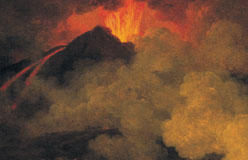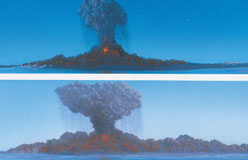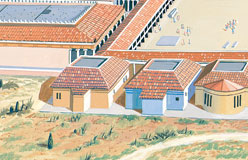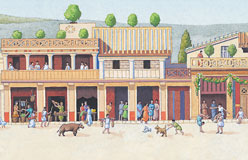August 24, A.D. 79, started out like any other summer day in Pompeii. That was a town in southern Italy. The sun was bright. The Bay of Naples was calm. Sheep grazed on the side of nearby Mount Vesuvius (Vuh-soo-vee-uhs). Farmers, fishermen, potters, weavers, and bakers brought their goods to the marketplace to sell.
By late morning, the town was humming. Some people were at a town meeting, while others shopped. Outside, children were playing.
Suddenly, a deafening crash broke the midday calm. The ground shook, hard. Looking toward Vesuvius, some people saw smoke rising from its top.
Within hours, Pompeii was buried under six to twenty feet of ash and pumice, a spongy rock. Two thousand people died. A whole town was wiped off the face of the Earth. And the cause of all this destruction? It was the volcanic eruption of Mount Vesuvius.
Pompeii stayed buried for nearly 2,000 years. In all that time, the legend of a lost city stayed alive. By March 23, 1748, researchers had found many important discoveries nearby. But on that day, diggers began to uncover the buried town.
Read on and you’ll discover Pompeii, a city time has not forgotten.







